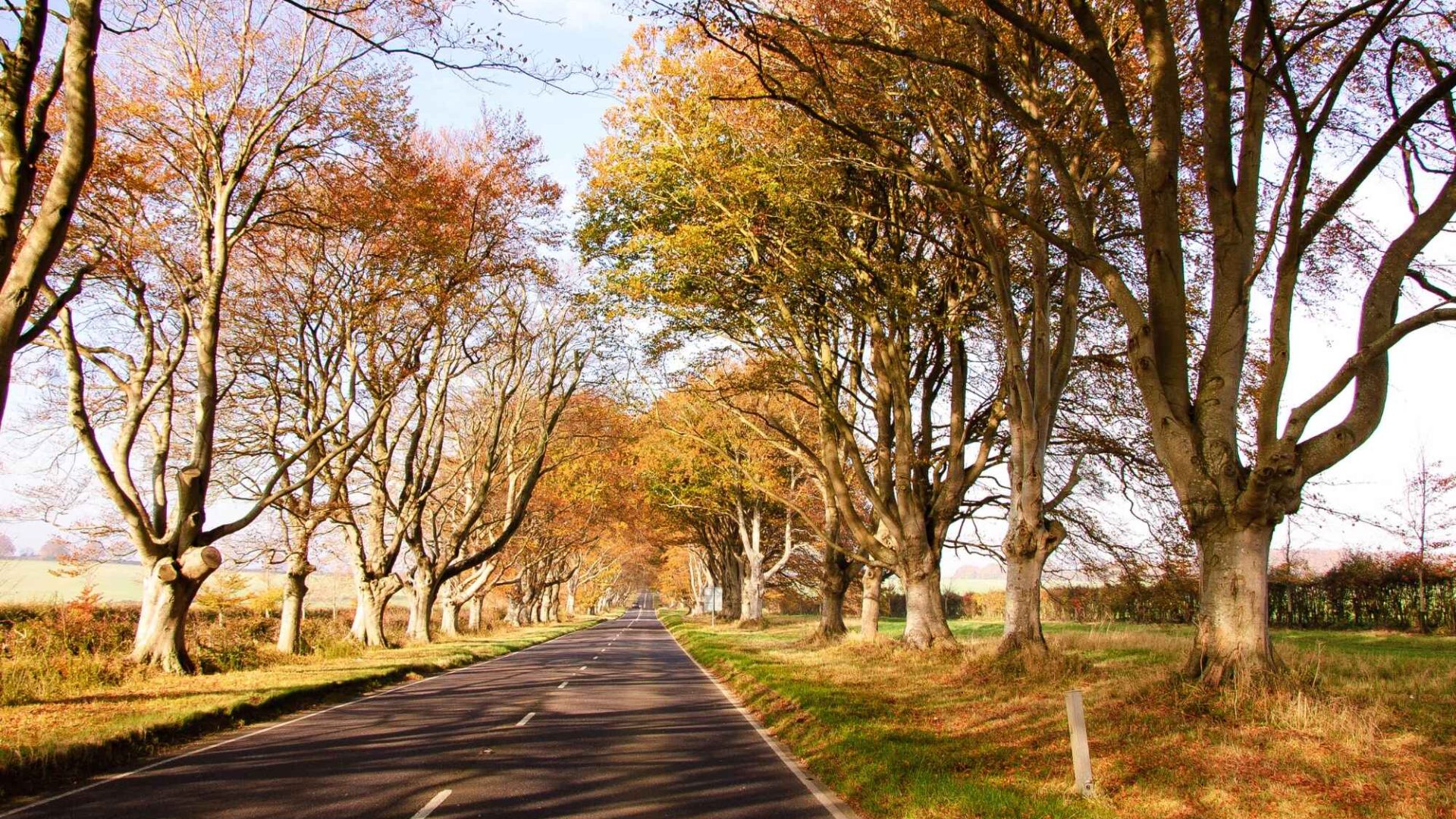

Dorset’s combination of stunning coastline, picturesque countryside, and historic villages makes it one of England’s most enchanting counties. Thanks to the National Trust in Dorset, many of the region’s most treasured sites are preserved for visitors to explore. Whether you’re interested in dramatic castle ruins, grand estates, unspoiled beaches, or literary landmarks, there’s something for everyone. This guide will take you through each National Trust property in our lovely county, with tips, highlights, and insider facts to help you make the most of your visit, and the best places to stay nearby for a great time away.
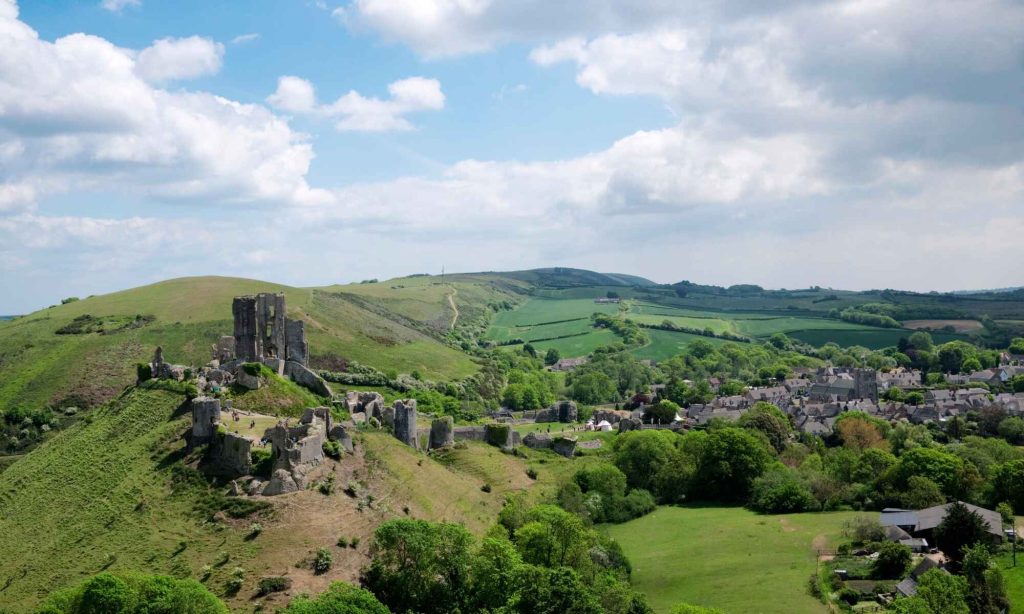
Corfe Castle is a dramatic, 1,000-year-old ruin that rises above the charming village of Corfe. Built by William the Conqueror in the 11th century, this fortress has a tumultuous history involving royal intrigue, sieges, and betrayal. During the English Civil War, it was famously besieged twice by Parliamentarian forces and was partially destroyed in 1646. Today, it stands as one of the most picturesque National Trust properties in Dorset, with crumbling towers and walls that tell tales of the past.
Did you know, legend has it that King Edward the Martyr was murdered at Corfe Castle in 978, sparking a dark and bloody chapter in England’s early history?
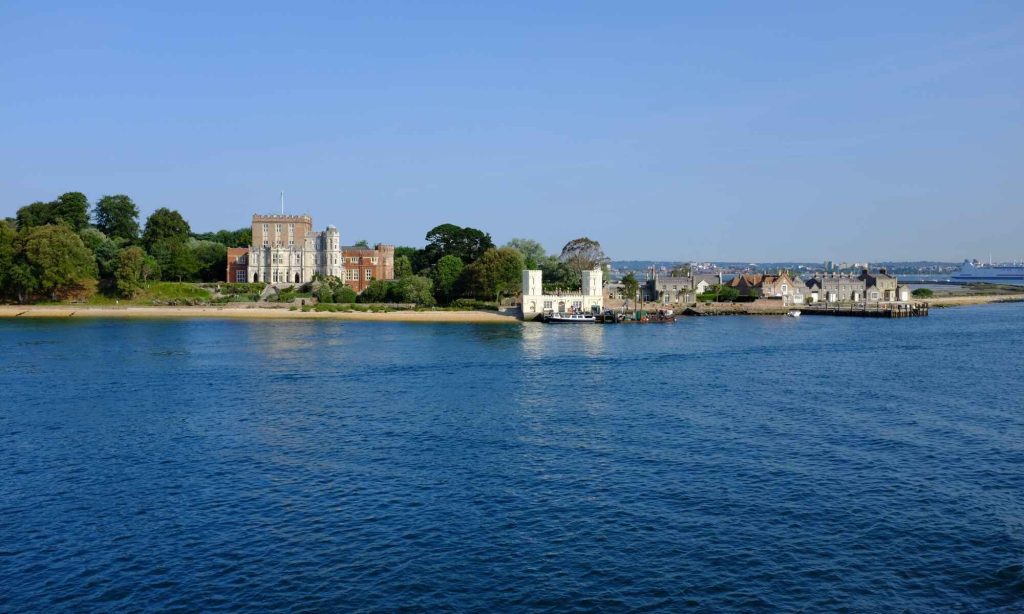
Situated in the heart of Poole Harbour, Brownsea Island is famous for its rare red squirrels and diverse birdlife, making it a prime destination for wildlife enthusiasts. The island, which also has a fascinating human history, was the birthplace of the international Scouting movement when Robert Baden-Powell held the first experimental camp here in 1907. The island’s mixture of woodland, heath, and lagoon provides a varied landscape that’s perfect for outdoor exploration.
Did you know, Brownsea Island is known as the birthplace of the worldwide Scout movement? A commemorative stone marks the site of the first camp organised by Baden-Powell.
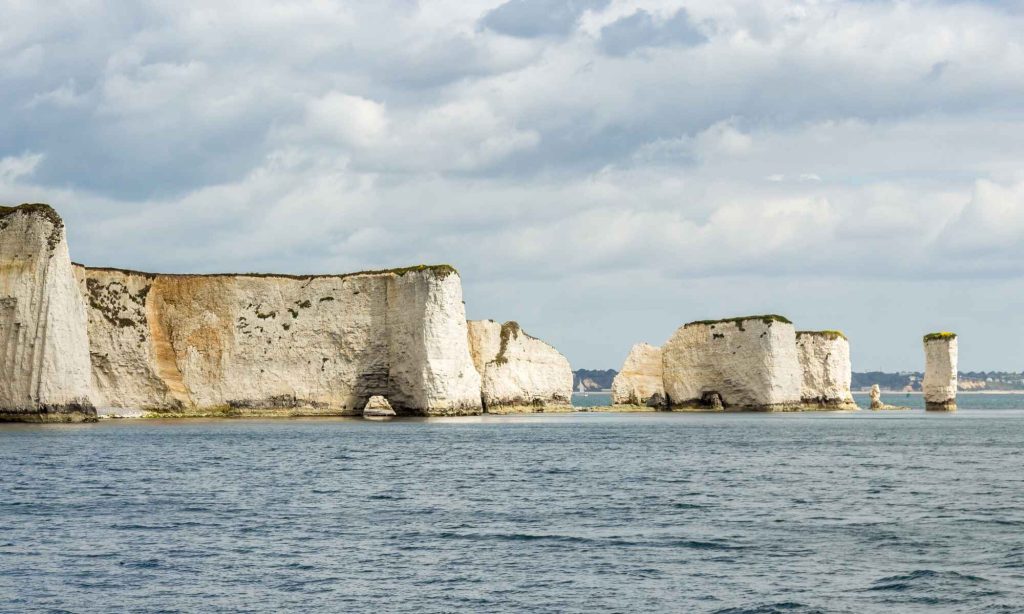
Studland Bay is a beautiful stretch of unspoiled coastline managed by the National Trust in Dorset. Its long sandy beaches and sweeping dunes attract sun-seekers, birdwatchers, and walkers alike. It’s also home to a unique marine ecosystem, including the UK’s most extensive seagrass bed—a habitat for seahorses. The bay is divided into four beaches: Shell Bay, Knoll Beach, Middle Beach, and South Beach, each offering a different experience.
Did you know, the seagrass meadows off Studland Bay are a vital habitat for the endangered long-snouted seahorse, one of the few places in the UK where they can be found?
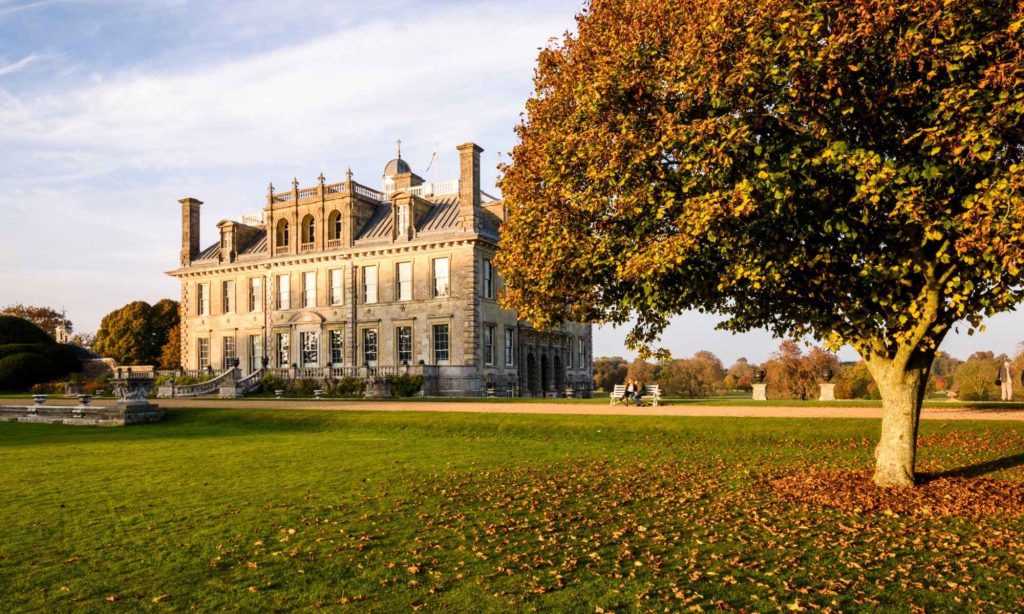
Kingston Lacy is a striking 17th-century Italianate mansion set within 8,500 acres of formal gardens, woodlands, and parkland. Once the home of the wealthy and influential Bankes family, the house is now a National Trust property in Dorset that showcases its vast art collection, luxurious interiors, and rare antiquities. The estate’s gardens are equally impressive, with a unique Japanese Garden, a Victorian Fernery, and the nation’s oldest surviving thatched glasshouse.
Did you know, the house at Kingston Lacy was originally built in the medieval period and used as a hunting lodge because of the large deer park to the northwest? This National Trust owned property was leased to those who were favoured by reigning royals, including John Beaufort whose daughter Margaret, mother of Henry VII, grew up there.
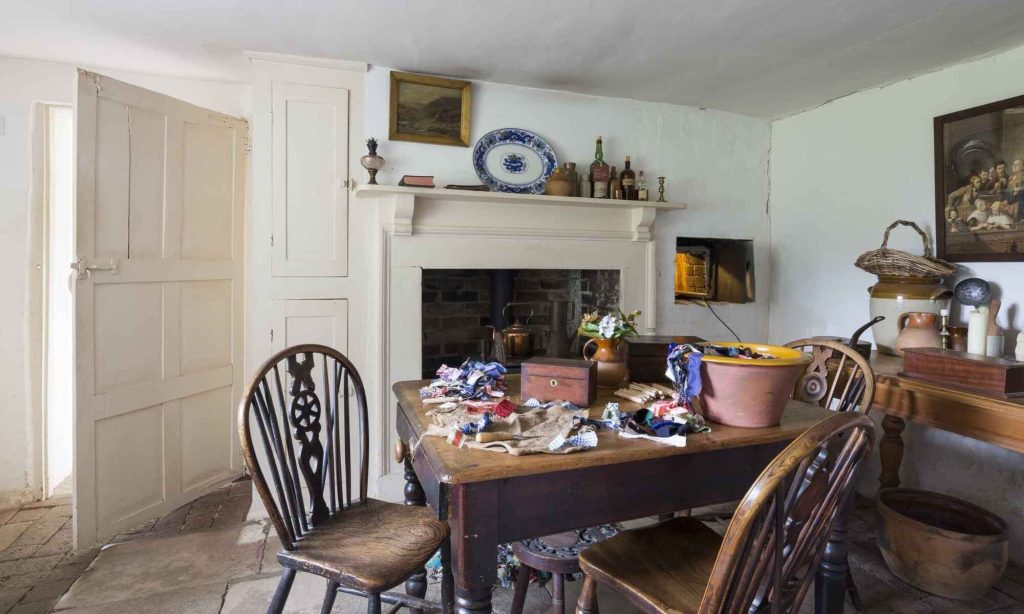
Hardy’s Cottage, a quaint thatched cottage surrounded by woodland, is the birthplace of Thomas Hardy, one of England’s most beloved novelists and poets. Managed by the National Trust in Dorset, the cottage is preserved much as it was during Hardy’s childhood, providing an intimate glimpse into his early life and inspirations. Many of his novels, including Far from the Madding Crowd and Tess of the d’Urbervilles, were inspired by the surrounding countryside.
Did you know, Hardy wrote his first novel, Under the Greenwood Tree, sat at a wooden desk in his bedroom at Hardy’s Cottage?
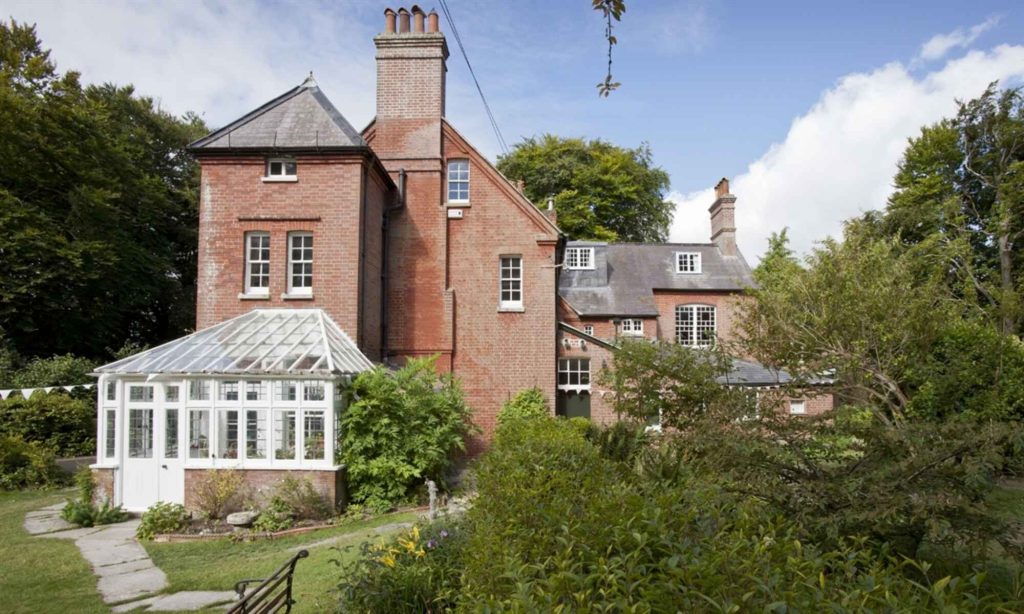
Max Gate, designed by Thomas Hardy himself, is a more substantial and refined home compared to his birthplace. He lived here during his later years, writing some of his most famous novels, including Jude the Obscure and Tess of the d’Urbervilles. This National Trust property in Dorset is a must-visit for anyone interested in English literature.
Did you know Hardy was originally buried at Westminster Abbey, but his heart was returned to Dorset and buried at Stinsford Church near Max Gate.
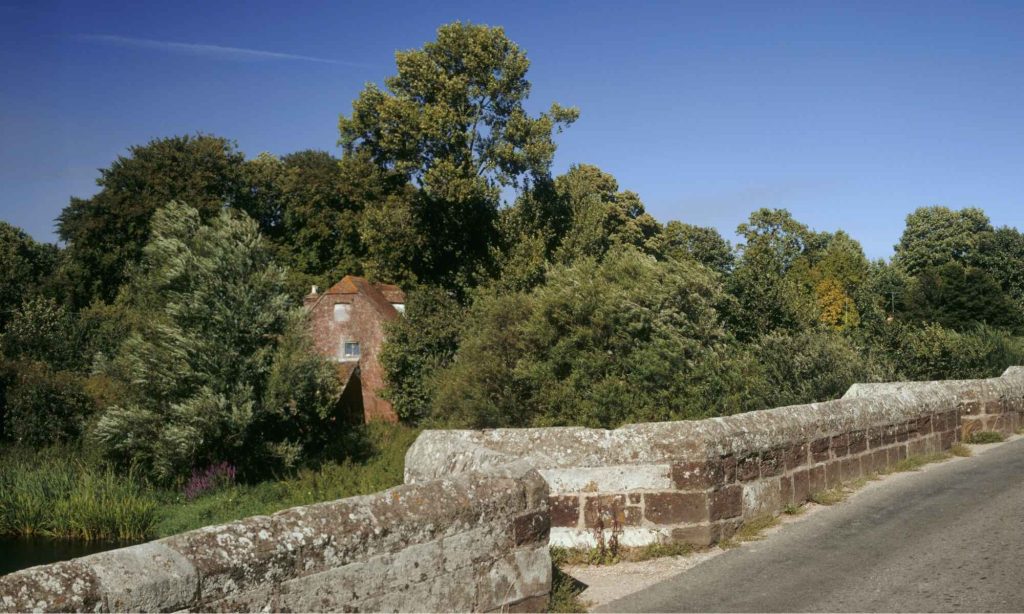
White Mill is an idyllic 18th-century watermill located on the peaceful banks of the River Stour. This small but fascinating mill, with its original machinery intact, provides a glimpse into Dorset’s agricultural history. It’s one of the quieter National Trust places in Dorset, making it perfect for a relaxing afternoon away from the crowds.
Did you know, the mill was in operation until the early 20th century, and its restoration offers a fascinating look at rural life in Dorset?
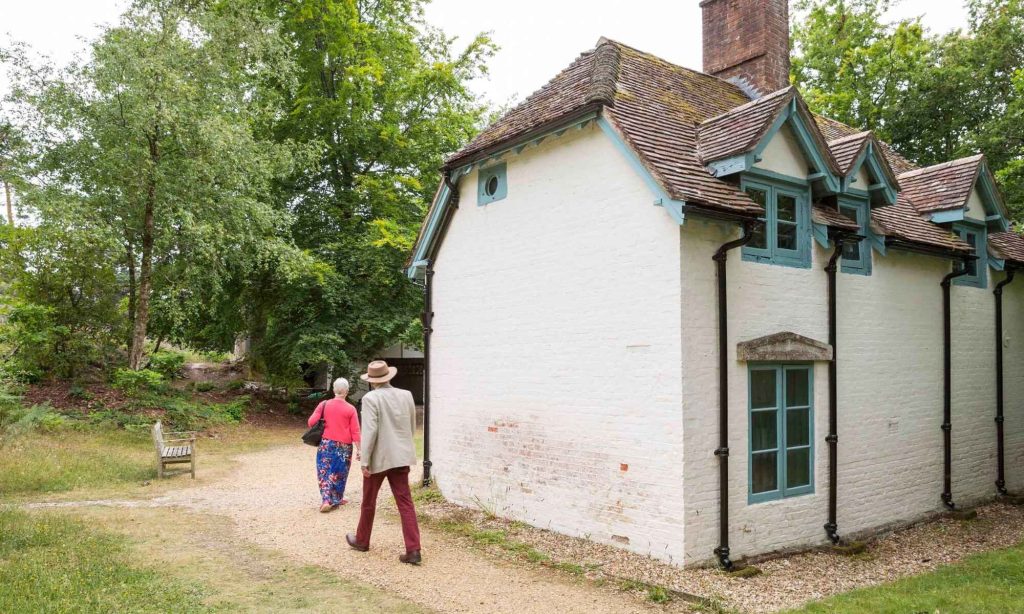
Clouds Hill, the rustic retreat of T.E. Lawrence (Lawrence of Arabia), is a small, unassuming cottage filled with character and history. Lawrence bought the cottage in 1923 as a refuge from public life and a space to write. Now a National Trust property in Dorset, the cottage has been preserved as it was, with original furnishings and personal items, offering a glimpse into the private life of this enigmatic historical figure.
Did you know, Lawrence was a keen motorcyclist and owned several Brough Superior bikes? His tragic death in 1935 occurred just a few miles from Clouds Hill, following a motorcycle accident.
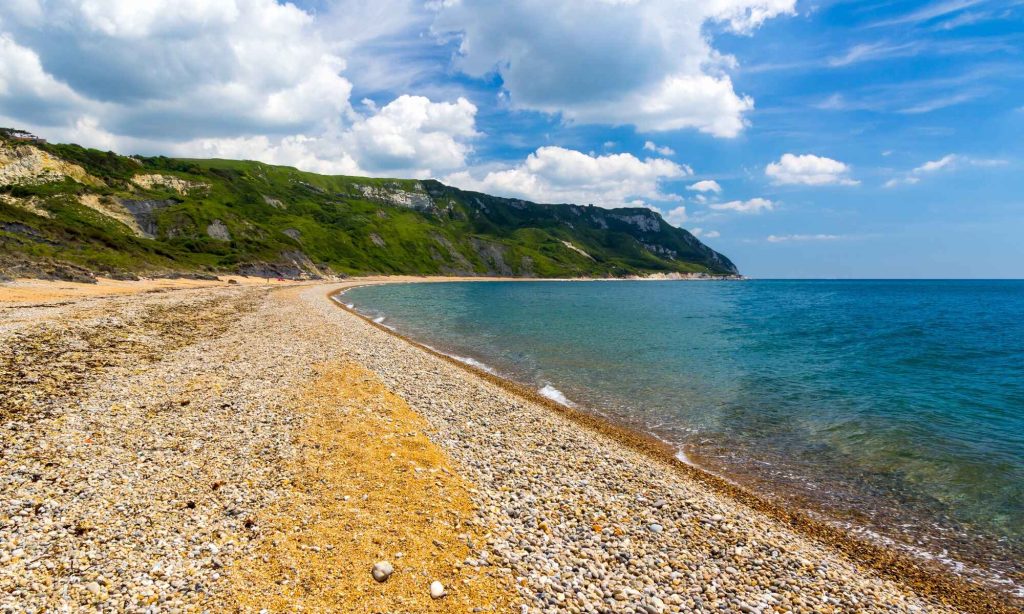
Ringstead Bay is a serene and secluded spot along the Jurassic Coast, managed by the National Trust in Dorset. With its stunning views of the Isle of Portland, unspoiled pebble beach, and crystal-clear waters, it’s a favourite for those seeking a quieter coastal experience. The area is known for its fossil-rich cliffs, peaceful countryside walks, and a rich history dating back to World War II.
Did you know, during World War II, the area was used as a practice zone for the D-Day landings, adding a layer of historical intrigue to this peaceful coastal retreat?
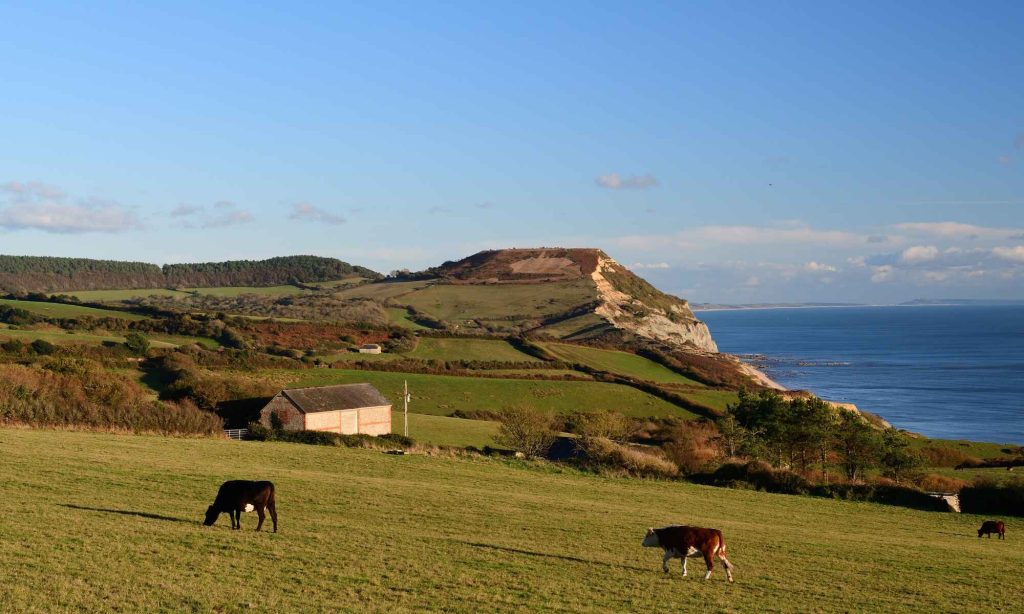
Golden Cap is an iconic feature of the Dorset National Trust landscape, towering 191 meters above sea level as the highest point on England’s southern coastline. It’s part of the Jurassic Coast, a UNESCO World Heritage Site, and offers some of the most breathtaking views in Dorset. On a clear day, you can see across Lyme Bay to Start Point in Devon.
Did you know, Golden Cap gets its name from the distinctive golden-green hue of its sandstone cliffs, which catch the sunlight beautifully?
To make the most of your journey through Dorset’s National Trust places, here are a few extra tips:
Dorset’s National Trust properties capture the essence of this beautiful county, from its dramatic coastline to its literary heritage and historic estates. Every location has its own unique story to tell, making it easy to lose yourself in the landscapes and legends of the past. Whether you’re visiting for a day or planning a longer stay, the National Trust in Dorset promises memorable experiences and stunning sights.
Plan your adventure, explore these hidden gems, and immerse yourself in the beauty and history that only Dorset National Trust sites can offer. Enjoy your journey through one of England’s most captivating counties!
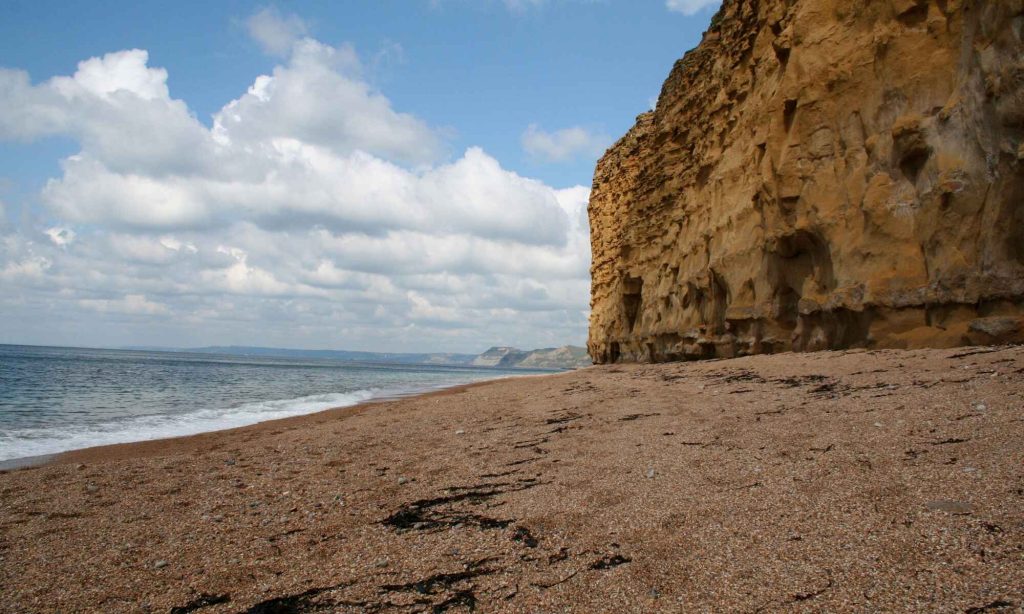
After a day spent exploring Dorset’s beautiful National Trust sites, there’s nothing better than returning to the comfort of an inviting holiday cottage. Picture yourself unwinding in a cosy living room, enjoying a cup of tea or a glass of wine as you look out over the peaceful countryside. Whether you’re planning the next day’s outing or simply taking it easy, our carefully chosen cottages offer a welcoming retreat.
Stay with us at Dorset Cottage Holidays and enjoy a comfortable base from which to explore the very best of Dorset, from charming villages to stunning coastlines. Let Dorset’s natural beauty and rich history make your holiday one to remember.